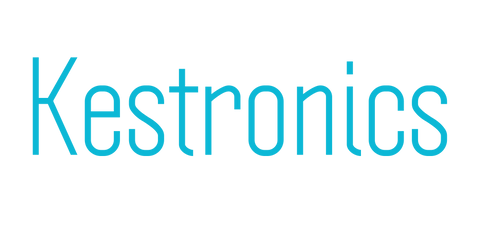In the world of printing technology, thermal printers are often associated with monochrome receipts and labels. However, a common question arises: Can thermal printers actually print in colour? The short answer is yes—some thermal printers can indeed produce colour prints, but with certain limitations and considerations.
This comprehensive guide will explore the capabilities, limitations, and applications of colour thermal printing technology to help you understand whether these printers might suit your specific needs.
Understanding Thermal Printing Technology
Before delving into colour capabilities, it's essential to understand how thermal printing technology works:
Direct Thermal Printing
Direct thermal printers use heat-sensitive paper that changes colour when heated by the thermal printhead. This method:
- Requires no ink, toner, or ribbons
- Produces only black prints on white or light-coloured media
- Is commonly used for receipts, shipping labels, and tickets
Thermal Transfer Printing
Thermal transfer printers use a heated printhead to melt a wax or resin-based ink from a ribbon onto the printing medium. This method:
- Utilises ribbons containing ink
- Can accommodate different coloured ribbons
- Creates more durable prints resistant to fading
- Is often used for barcode labels, asset tags, and product labels
Types of Thermal Printers That Can Print in Colour
Several specialised thermal printer types can produce colour outputs:
1. Zebra IQ Colour Printers
Zebra's innovative IQ colour technology offers:
- Multi-colour printing system with nine available colours
- Ability to print in black, red, orange, yellow, green, blue, purple, cyan, and magenta
- Option to use up to four colours per print job
- Applications in warning labels, safety information, and categorisation
2. Thermal Transfer Printers with Colour Ribbons
Standard thermal transfer printers can utilise coloured ribbons:
- Single-colour printing per print job
- Limited colour palette availability (typically red, blue, green, gold, silver)
- Need to change ribbons when switching colours
- Ideal for highlighting specific information or creating simple colour-coded systems
3. ZINK (Zero Ink) Printers
ZINK technology uses heat-activated colour crystals embedded in special paper:
- Requires no ink cartridges or ribbons
- Produces full-colour prints
- Creates waterproof and tear-resistant prints
- Commonly used in portable photo printers
- Only works with proprietary ZINK paper
4. Dye-Sublimation Thermal Printers
These printers use heat to transfer dye onto materials:
- Employs the CMYO (cyan, magenta, yellow, overcoating) system
- Creates continuous-tone images with smooth gradients
- Produces professional-quality photo prints
- Requires special dye-sublimation paper or polyester-coated materials
- Often used for ID cards, photo printing, and promotional items
5. Retransfer Thermal Printers
Retransfer technology uses a two-step process:
- First prints on a transparent film
- Then applies heat and pressure to transfer the image to the final medium
- Produces edge-to-edge printing
- Creates vibrant, full-colour images
- Commonly used for ID cards, membership cards, and security badges
Print Quality Considerations for Colour Thermal Printing
When considering colour thermal printing, quality factors to evaluate include:
Resolution and Detail
- High-resolution thermal printers (300-600 DPI) produce sharper images
- Lower-resolution printers may create visible dots or jagged edges
- Fine details and small text clarity varies by printer type
Colour Accuracy and Vibrancy
- Industrial thermal printers typically cannot match the colour accuracy of inkjet or laser printers
- Dye-sublimation provides the most vibrant and accurate colours among thermal technologies
- Thermal transfer ribbons offer limited colour options with less vibrancy
- ZINK technology provides good colour reproduction but may lack the depth of professional photo printers
Durability and Longevity
- Thermal transfer prints resist fading and smudging better than direct thermal prints
- Dye-sublimation prints can last for years without significant colour degradation
- ZINK prints are water-resistant and durable
- UV exposure can affect colour longevity in all thermal printing methods
Common Applications for Colour Thermal Printing
Colour thermal printing serves various industries and purposes:
Retail and Hospitality
- Highlight promotions on receipts
- Print colour logos on packaging labels
- Create eye-catching price tags and shelf labels
- Produce meal tickets with colour-coded information
Healthcare
- Colour-code patient wristbands and medical records
- Print warning labels for medications
- Create colour-highlighted appointment cards
- Produce medical instruction labels with colour emphasis
Manufacturing and Logistics
- Print colour-coded inventory labels
- Create safety warning labels with red highlights
- Produce shipping labels with colour-differentiated information
- Generate quality control tags with colour indicators
Events and Entertainment
- Print coloured tickets and wristbands
- Create colour-coded access passes
- Produce membership cards with colour photos
- Generate visitor badges with colour elements
Cost Considerations for Colour Thermal Printing
Implementing colour thermal printing involves various costs:
Equipment Investment
- Colour-capable thermal printers typically cost more than monochrome models
- Specialised printers like dye-sublimation devices require additional equipment (heat press)
- Multi-colour systems require more complex maintenance
Consumables Expenses
- Coloured thermal transfer ribbons cost more than standard black ribbons
- Specialised media like ZINK paper is more expensive than standard thermal paper
- Dye-sublimation cartridges and ribbons have higher per-print costs than many alternatives
Maintenance Requirements
- Colour thermal printers often require more frequent printhead cleaning
- Multi-colour systems may need more regular maintenance
- Colour calibration may be necessary for consistent results
Limitations of Colour Thermal Printing
Despite their capabilities, colour thermal printers have several limitations:
Limited Colour Range
- Most thermal transfer printers can only print one colour at a time
- Zebra IQ technology is limited to nine colours with a maximum of four per print
- Full CMYK colour process is only available in dye-sublimation and some retransfer printers
Media Restrictions
- Direct thermal printing cannot produce colour at all
- ZINK printers only work with specialised ZINK paper
- Dye-sublimation requires polyester-coated materials or special papers
- Thermal transfer printing works best on smooth surfaces
Print Speed Considerations
- Colour thermal printing is typically slower than monochrome
- Multi-colour prints require multiple passes or printheads
- Dye-sublimation printing involves separate passes for each colour layer
Choosing the Right Colour Thermal Printer
When selecting a colour thermal printer, consider:
Printing Volume Requirements
- Low-volume: ZINK or basic thermal transfer printers
- Medium-volume: Multi-colour thermal transfer systems
- High-volume: Industrial dye-sublimation or retransfer printers
Application-Specific Needs
- Photo-quality needs: Dye-sublimation printers
- Durable outdoor labels: Thermal transfer with resin ribbons
- Simple colour highlighting: Basic thermal transfer with coloured ribbons
- Full-colour badges or cards: Retransfer printers
Budget Constraints
- Initial investment budget
- Per-print cost expectations
- Maintenance and consumables budget
- Return on investment timeline
Future Trends in Colour Thermal Printing
The colour thermal printing landscape continues to evolve:
Expanding Colour Capabilities
- Research into expanded colour palettes for thermal transfer
- Development of multi-colour direct thermal papers
- Improved colour mixing techniques for thermal printing
Sustainability Improvements
- Development of eco-friendly thermal papers and ribbons
- Reduced energy consumption in newer printer models
- Longer-lasting printheads reducing replacement waste
Integration with Digital Technologies
- Mobile thermal printing with colour capabilities
- Cloud-connected colour thermal printers
- Automated colour selection based on print content
Conclusion: Is Colour Thermal Printing Right for Your Needs?
While thermal printers can indeed print in colour, their capabilities vary significantly depending on the technology used. For basic colour-coding and highlighting, thermal transfer printers with coloured ribbons may suffice. For high-quality photo printing, dye-sublimation offers better results.
However, if your primary requirements include vibrant, detailed, full-colour printing across various media types, traditional inkjet or laser printers remain the more versatile options. Thermal printers excel in industrial environments where durability, speed, and specific applications take precedence over extensive colour capabilities.
Consider your specific needs, budget, and application requirements when determining whether colour thermal printing is the right solution for your business or personal use.

